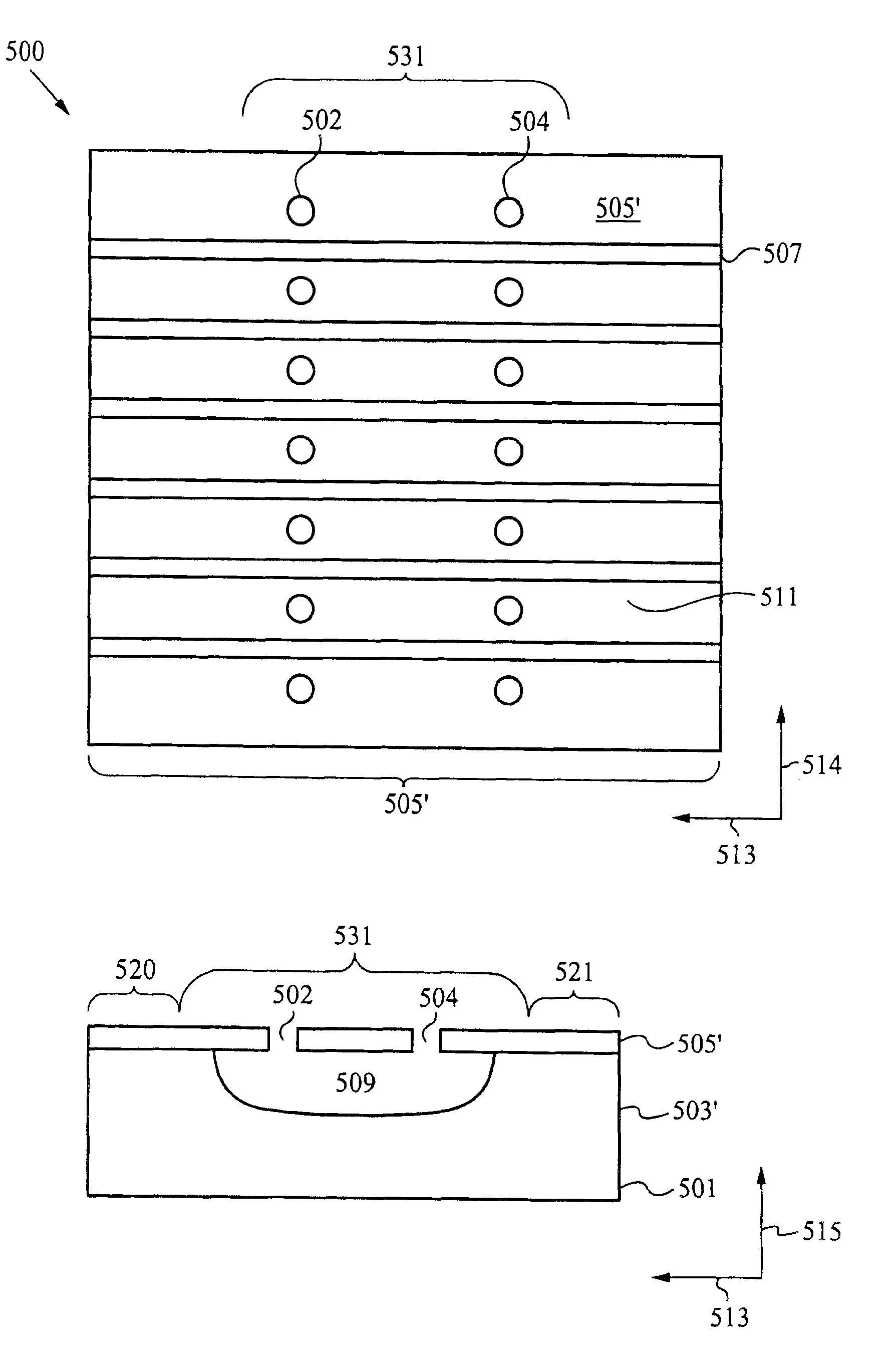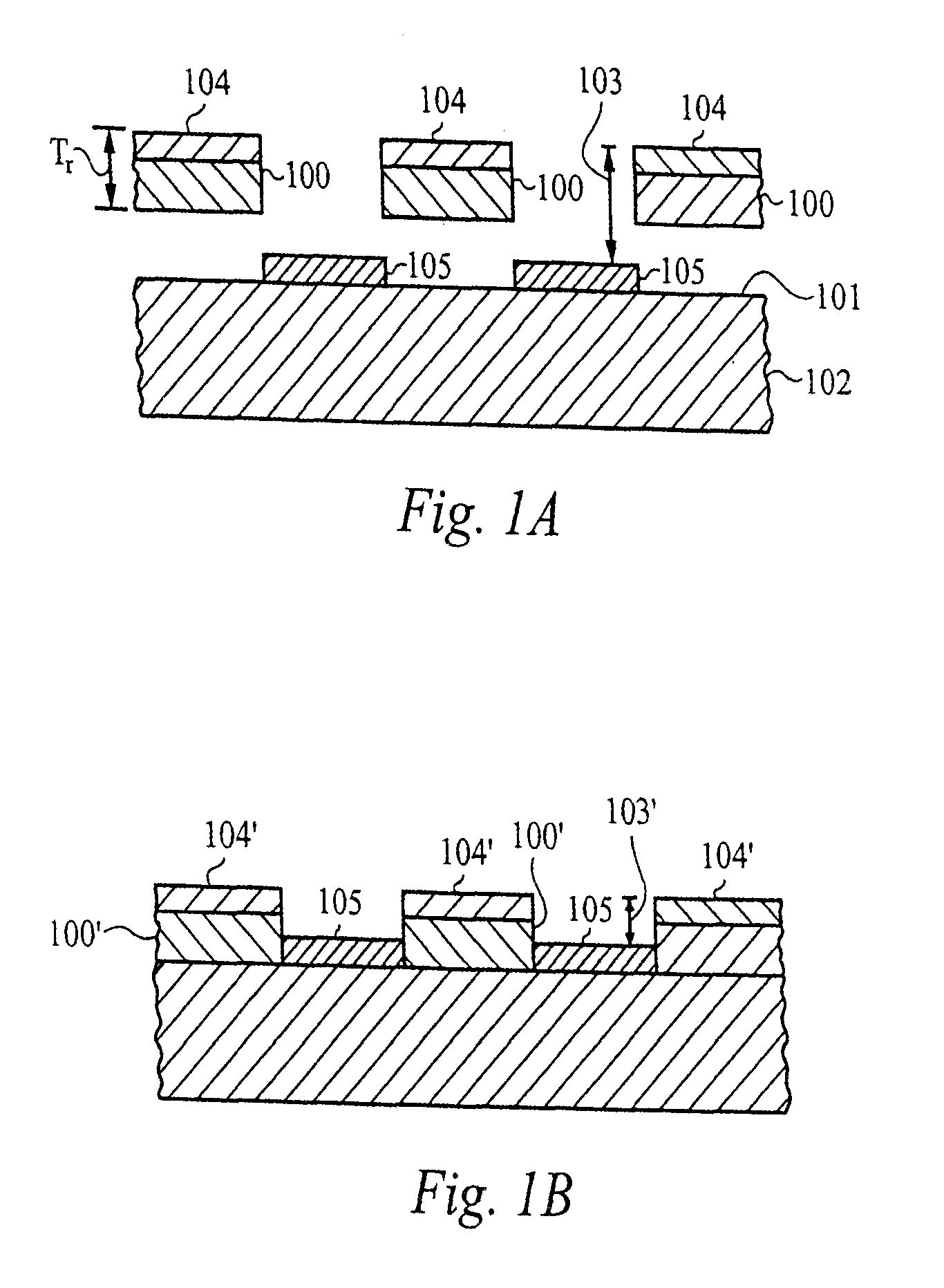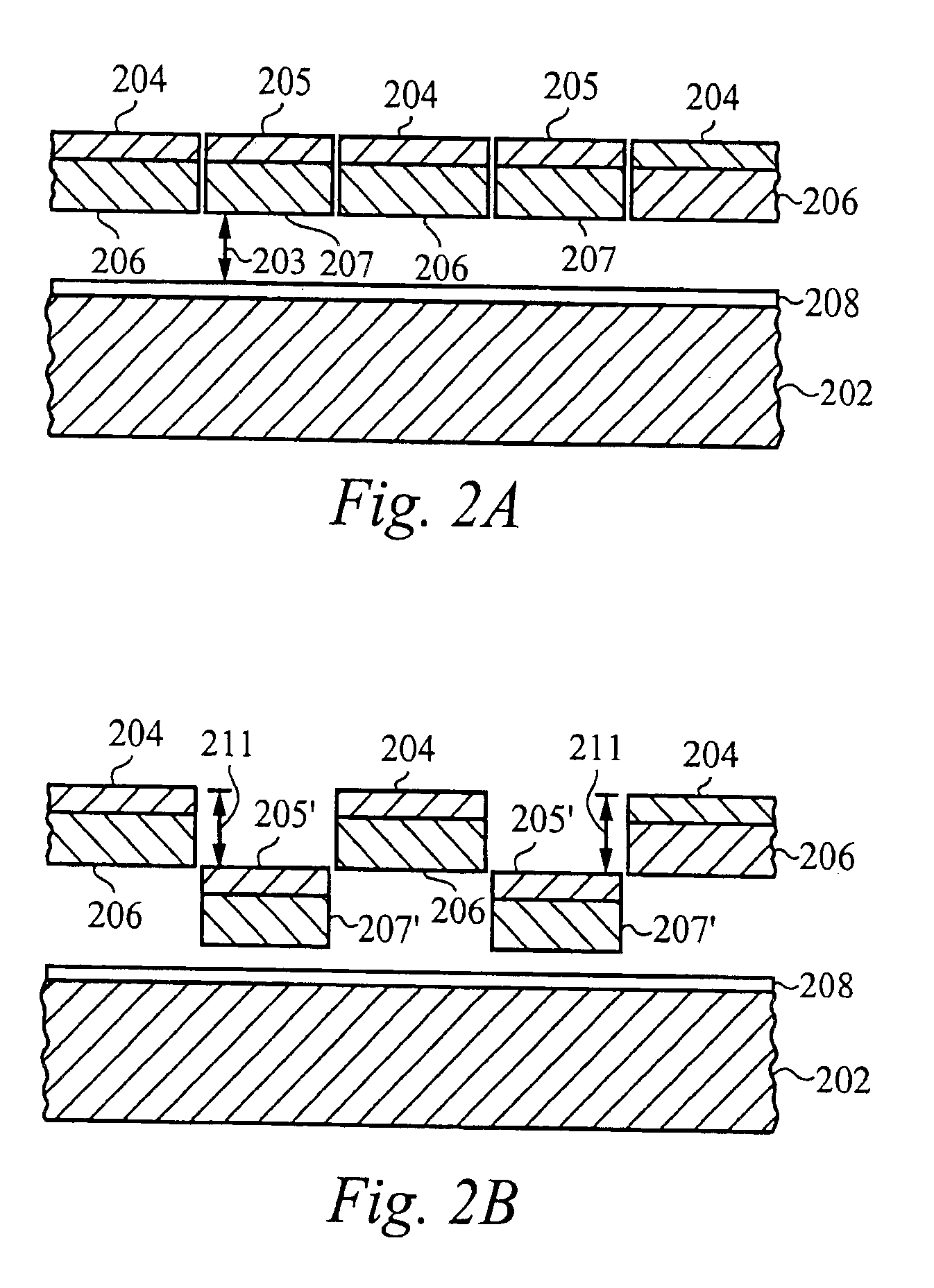Silicon substrate as a light modulator sacrificial layer
- Summary
- Abstract
- Description
- Claims
- Application Information
AI Technical Summary
Benefits of technology
Problems solved by technology
Method used
Image
Examples
Embodiment Construction
[0019]Referring to FIG. 1a, an optical MEM device can have a plurality of movable ribbons 100 with reflective surfaces 104 spatially arranged over a substrate 102 and a plurality of reflective surfaces 105 spatially arranged on the substrate 102 between movable ribbons 100, such that adjacent reflective surfaces 104 and 105 modulate light, as described below. The surfaces 104 and 105 are made to be reflective by depositing a thin film of reflective material, such as silver or aluminum, on the ribbons 100 and substrate 102, respectively. The ribbons 100 and the substrate 102 are preferably formed from silicon-based materials such as silicon nitride. A height difference 103 between the reflective surfaces 104 and 105 is preferably configured to be λ / 2 when the ribbons 100 are in an up position, as shown in FIG. 1a. When light having a wavelength λ impinges on the compliment of reflective surfaces 104 and 105, the light that is reflected from the surfaces 104 and 105 is in phase, there...
PUM
 Login to View More
Login to View More Abstract
Description
Claims
Application Information
 Login to View More
Login to View More - R&D
- Intellectual Property
- Life Sciences
- Materials
- Tech Scout
- Unparalleled Data Quality
- Higher Quality Content
- 60% Fewer Hallucinations
Browse by: Latest US Patents, China's latest patents, Technical Efficacy Thesaurus, Application Domain, Technology Topic, Popular Technical Reports.
© 2025 PatSnap. All rights reserved.Legal|Privacy policy|Modern Slavery Act Transparency Statement|Sitemap|About US| Contact US: help@patsnap.com



